Areas of Responsibility
More actions
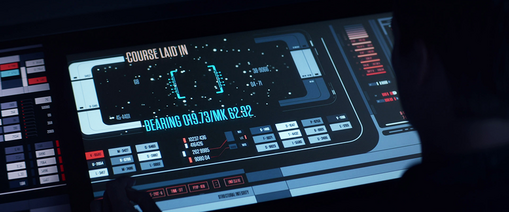
Areas of Responsibility (AORs) are a storytelling mechanism for the 2025 Fleet Action, Nightfall. When the Alpha and Beta Quadrants are attacked by the resurgent Vaadwaur Supremacy, starships of the Fourth Fleet will rally to their defence across the Federation and beyond. With the Blackout blocking warp travel across vast swathes of space, whole systems and sectors are isolated from one another, defended and supported only by what forces were already in the region, or what few can reach them through Underspace and alternative faster-than-light technologies.
In Nightfall, each member may claim an Area of Responsibility for their Fleet Action mission. They have the right to determine the nature of the Blackout’s impact on the region, and the exact borders of the Blackout itself. For example, is a star system totally isolated, or a sector, or a sector block? Is warp travel to the region absolutely impossible, possible only at a very low warp factor, or possible only via a circuitous route delaying any reinforcements? The member responsible for an AOR may also determine the nature and intensity of the Vaadwaur invasion. In short, a member’s AOR is for them to write in the FA as they see fit.
AORs may refer to wholly member canon regions created for this FA, or Trek or fleet canon regions. Members obviously have more leeway in writing the former, particularly when it comes to the outcome and level of devastation a region can suffer from the Blackout or Vaadwaur.
AOR Types
There are four types of AORs:
- Member canon AORs, regions that have been created by members - either for this FA, or which have been created in the past. Members have ownership of any member canon AOR they create.
- Starbase AORs, the surrounding regions of a member’s own starbase. That member has ownership of the AOR.
- TF AORs, the environs of a Task Force starbase. TF staff have ownership of the AOR.
- Canon AORs, locations in Trek or fleet canon. Members who apply for and are allocated that AOR have ownership of it.
If you do not have ownership of an AOR, you must not make determinations on events or circumstances within it, or try to write stories set within it without permission of the owner.
Member Canon AOR
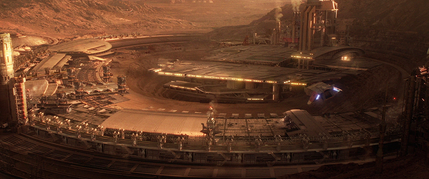
Under member canon, members can create elements of the Star Trek setting that are their own to write, flesh out, and determine the nature and fate of. For this FA, that includes a whole new Area of Responsibility. This AOR can be within any government’s territory.
This is functionally the same as creating a new planet for a one-off mission. Member canon locations are still ‘real,’ but must be sufficiently unobtrusive to the setting that it is believable for the writing of other members and the Intelligence Office if that location is never mentioned. This reflects both the reality of a large organisation like Bravo Fleet, where no one person can keep track of the writing of every single member, and keeping our storytelling policies fair, where no non-staff member can unilaterally make changes to the setting by which everyone else must abide
A member canon AOR might be a remote fringe sector or an unremarkable deep interior sector. It may include colonies or settlements from canon species and governments, local Starfleet defence forces, and other such features.
Starbase AOR
Members who own starbases usually flesh out at least the star system their starbase exists within, and often the surrounding sector. They only have creative authority over that star system, as the immediate environment of the starbase, and any member canon additions to the local region. If a Trek or fleet canon star system is ‘next door,’ this is not ‘theirs;’ the member may depict it in stories like any other writer, but they may not make substantive changes to the location.
In Nightfall, a member with a starbase continues to have ownership over their starbase’s local area, including the home system and local member canon regions. Please note, however, that a member is not obligated to use their Starbase AOR in their FA writing. They may wish to write a mission with their starships set elsewhere, and are free to create a new, member canon AOR, or apply for a canon AOR. If a member applies for a canon AOR and wishes to write a mission or missions set there and in their starbase AOR, they should be considerate of others: don’t take up an exclusive, canonical AOR if you’re going to spend more time writing your starbase AOR. If you believe you can do both, do both!
If a member is unsure of the extent of their starbase’s AOR, they should consult the Intelligence Office.
Task Force AORs
Task Force AORs are the headquarters and starbases of a TF and their surrounding regions. It is down to the TF staff to determine how those areas have been impacted by the Blackout, and the nature of the Vaadwaur invasion. Members may write missions set in those regions, but only with permission of the pertinent TFCO. Members are not restricted to only write in their own Task Force’s AOR so long as they have permission.
Collaborating with TF staff and other writers to share a TF AOR is explained below.
The list of TF AORs is as follows:
- Task Force 17:
- Deep Space 17 and the Typhon Frontier (not including Mirage Station, Eos Station, or Deep Space 19)
- Starbase 339 (not extending as far as the Olympia System and Deep Space 20)
- Task Force 21:
- Starbase 21 and the Deneb Sector Block (not extending as far as Cait, Starbase 514, or Caelum Station, but including Deneb and Janoor III)
- Starbase 611 and Cestus (not extending as far as Deep Space 2, K-74, or Ardana)
- Task Force 47:
- Deep Space 47 and the Thomar Expanse
- Starbase K-74 (including Krios Prime and Valt Minor, but not extending as far as Hecate Station, Cestus/Starbase 611 or Ardana)
- Task Force 72:
- Starbase 72 and the Demilitarized Zone (not extending as far as Bajor)
- Joint Base Dathon (including some, but not all, of the Federation border with the Children of Tama)
- Task Force 86:
- Starbase 86 and the Triangle
- Starbase 260 (including some of the Federation border with the Ferengi Alliance but not reaching as far as Deep Space 3, Starbase 25, Hekaras, or Starbase 38)
- Task Force 93:
- Starbase 93 and the surrounding regions of the Romulan Neutral Zone (reaching as far as Yadalla and Qualor, but not as far as Tranquility Station, Starbase 23, or Starbase 39-Sierra)
- Starbase 142 (including the surrounding sector, not reaching as far as Deep Space Station K-7 or Starbase 84)
Within the larger regions, such as the Typhon Frontier, Deneb Sector Block, Thomar Expanse, Demilitarized Zone, and the Triangle, members may write missions set in AORs within them without direct collaboration with TF staff. These must be member canon AORs, completely isolated by the Blackout, and consist of no more than two member canon star systems. These AORs would be, essentially, small and out of the way from a dramatic perspective. Members doing this should still notify the pertinent TF staff.
Canon AORs
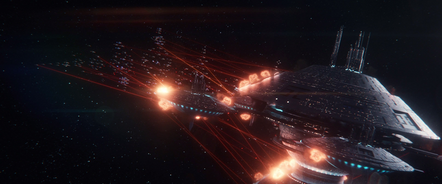
Canon AORs are systems and sectors that are Trek canon or fleet canon. They are places like Vulcan, Baku, Freecloud, Mellstoxx, Ardana, or Grazer: locations that have been seen on screen, explicitly created and fleshed out by the Intelligence Office, or locations that exist by implication (such as Grazer, the homeworld of the Grazerites). They include locations outside of the Federation, but for the purposes of this FA are restricted to the Alpha and Beta Quadrants.
The Vaadwaur invasion and particularly the Blackout are affecting everywhere. In this FA, members have a unique chance to depict canonical locations, particularly locations in the Federation interior that are rarely affected by major plots. A list of appropriate canon locations has been made available as AORs for members to use and depict in their missions, determining how this event impacts major sites in lore.
To own a canon AOR, members will fill out the Intelligence Office form, selecting their chosen AOR from a list. Once the Intelligence Officer confirms this allocation, the member may write a FA mission about this location. If a member is interested in a canonical location not on the list, they should reach out to the Intelligence Office. This form will be released some time w/c March 24th.
While the Vaadwaur invasion and Blackout will devastate much of the galaxy, the default expectation is that the member’s mission to save a canon AOR is broadly successful. The world may suffer horrific losses, but will, with time and aid, recover. A member may not write, for example, that Vulcan has been reduced to an irradiated wasteland, uninhabitable for generations. If members wish to write developments that may have a specific long-term impact on their canon AOR, they must request permission from the Intelligence Officer.
Canon AORs will be listed as specific locations, usually a world or star system (‘Vulcan,’ ‘Freecloud’). Members are welcome to assume the AOR extends to any conceivable neighbouring systems so long as those systems are member canon or not already included in the list of available canonical AORs. For example, the Vulcan AOR may include Weytahn and P’Jem, but not Andoria. The Andoria AOR may include nearby member canon star systems that were once part of the Andorian Empire, though members should not claim their AOR is ‘the entirety’ of the territory of the former Andorian Empire. Anyone is free to create member canon AORs among such core worlds. If you are unsure of the reach of your canonical AOR, contact the Intelligence Office.
List of Canon AORs
This is a complete list of all canon AORs available to members, including those which have already been assigned. It also includes options/guidance on what adjacent systems could be included within the AOR - thus, presumably, accessible despite the Blackout - and which are explicitly not included. References to systems in a sector square specifically reference the sector square as depicted in the Bravo Fleet map.
If you are unsure of the reach of your desired or chosen AOR, or would like to set your mission at a canonical location not listed below (including the optional systems included within an AOR), reach out to the Intelligence Office. Please note that systems such as Sol, Avalon, Qo’nos, and Cardassia are unavailable even by request.
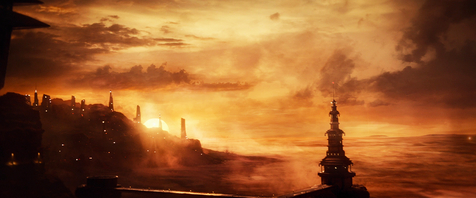
Federation
- Alpha Centauri, optionally including Wolf 359 and Barnard’s Star but not Sol (assigned to Admiral Alexander Beckett)
- Deneva, optionally including Pollux and Valakis but not SB-12
- Vega, optionally including all systems within the left sector square: Fellebia, Sigma Draconis, Cor Caroli, Kaitos, and Peliar Zel
- Vulcan, optionally including P’Jem but not Andoria or Weytahn (assigned to Captain Gar'rath)
- Andoria, optionally including Weytahn but not Vulcan or P'Jem (assigned to Fleet Captain Noli Auru)
- Tellar, optionally including systems in its sector square except Vega and Sol
- Cait, not including other systems of the Deneb Sector Block or SB-514 but optionally including some border with the Kzinti Patriarchy (assigned to Captain Aryanna Rigras)
- Betazed, optionally including systems in its sector square (assigned to Rear Admiral Alexandra Sudari-Kravchik)
- Delta, optionally including systems in its sector square
- Ardana (assigned to Admiral Liam Dahlgren)
- Coridan, optionally including Akaali
- Risa, optionally including SB-18 and Ceti Alpha (assigned to Captain Cressida Brennan)
- Trill, optionally including systems in its sector square
- Beta Orionis
- Archer, optionally including the Arachnid Nebula and systems in its sector square
- Coppelius, optionally including systems in its sector square
- Ba’ku, optionally including the Briar Patch and systems in its sector square (assigned to Commander Alaric Constantine)
Non-Federation
- Freecloud (neutral), optionally including systems in its sector square (assigned to Commander Jaya Thorne)
- Narendra (Klingon Empire), optionally including Pheben and Balduk but not regions in the Triangle (assigned to Lieutenant Commander Charlotte MacColgan)
- Beta Penthe (Rura Penthe) (Klingon Empire), optionally including systems in its sector square (assigned to Lieutenant Commander Fabien Oteng)
- K’t’inga (Klingon Empire), optionally including systems in its sector square (assigned to Fleet Admiral James Neidlinger)
- Boreth (Klingon Empire), optionally including systems in its sector square (assigned to Lieutenant Aloran)
- Achernar (Romulan Free State), optionally including systems in its sector square
- Gasko (Romulan Republic), optionally including systems in its sector square, including some of the Azure Nebula and Federation border
- D’Deridex (Romulan Republic), optionally including systems in its sector square but not regions in the Triangle (assigned to Commander Octavian Jackson)
- Chin’toka (Cardassian Union), optionally including systems in Cardassian territory in its sector square but not the DMZ (assigned to Fleet Captain Henry Maxwell)
- Sarpedion (Cardassian Union), optionally including systems in its sector square and the Tong Beak Nebula
Interpreting the Map
The Bravo Fleet map provides essential guidance in the extent of AORs and how they fit together. It includes a rough scale, with each map square representing an area approximately 20 light-years by 20 light-years, considered the size of the average sector. The Blackout is a great opportunity to play with concepts of distance; if it affects a region, warp travel and communication between star systems considered very close to each other are now impossible. For illustration, travelling between two star systems five light-years apart takes 2 months at Warp 3, 9 days at Warp 5, a day at Warp 9, 6 hours at Warp 9.99, and 80 years at full impulse. Space is big, very big, and this event is a chance to emphasise that.
Space is also depicted on a two-dimensional map. While we know the distance between some stars, through canon and contemporary astronomy (we know, for example, that Alpha Centauri is 4.367 light years from us), for others, all we have is guesswork and the map. What the map doesn’t capture is height/depth. The Milky Way is 1,000 light-years tall, which means that the Federation (rarely more than 200 light-years across) could very easily be just as deep as it is wide. Two systems that the map shows in the same square don’t have to be within 20 light-years of each other.
It’s to our benefit to be vague about this when it suits us. Being too precise adds more restrictions than opportunities, and it’s essential to note that Star Trek ships always travel at the speed of plot. For illustration, based on warp speed charts and the Star Trek charts, it should take 25+ days for the Defiant to travel from Deep Space 9 to Earth - a journey that certainly doesn’t take that long in ‘Paradise Lost.’
All of this is to say that space is big. Really big. Conveniently big. And, at other times, conveniently small. If you want to cram a few more member canon star systems into the DMZ or the Thomar Expanse, you can do that. Both frontiers and the core worlds - or what appear to be the core worlds on the map - have more space for member canon than you might think.
AOR NPCs and NPC Forces

It’s assumed that any region within the Federation or neighbouring empires has some form of local defence force and government. The size and nature of this depends on the area, its strategic significance, how dangerous it usually is, how much infrastructure there is, how many people live there, etc, etc. Fourth Fleet ships rarely serve as the local defence detail of any particular region, and in Nightfall, the default assumption is that they will be racing to help repel the Vaadwaur invasion of an AOR. They may or may not be alone.
It is down to the owner of an AOR to determine what non-Fourth Fleet forces are already in the area. This FA has a large and epic scope, and members are welcome to depict big and dramatic battles and campaigns against the assembled forces of invading fleets. Some AORs may canonically include major starbases, and may realistically have strong local defence forces already there.
Members are broadly free to depict these NPC forces, including their commanders, in their stories. They must abide by all Intelligence Office Policy guidelines with such depiction; critically, none of these ships may be drawn from the Bravo Fleet registry. While it may be appropriate for some of these ships, which may be defending strongholds of the Federation, to be advanced and prestigious ship classes, members are encouraged to follow the spirit of policy. It is appropriate, for example, for a member to depict their California class running plucky support to local NPC defence forces led by a Sovereign. It is less appropriate for a member’s Reliant or Excelsior II class to assume a leadership position of a wing of Defiant- or Manticore-class ships.
A rule of thumb is that the NPC forces must have a reason to exist in your story. There are plenty of reasons for them to not be present even in stories in the Federation heartlands: perhaps they were caught out of position when the Blackout fell, or perhaps they have already been destroyed or disabled by the Vaadwaur. Their existence might be primarily off-screen, engaging the bulk of Vaadwaur forces while your ship/squadron pursues its objectives, or waiting in the wings to warp into the sector and provide reinforcements once the local Blackout Outpost has been destroyed.
These NPC forces also will already have a chain of command and ranking officers. They may be in disarray, with your ship/squadron riding to the rescue, but the more large and powerful local forces are, the more likely their command staff are to have seniority over your ship/squadron. Local command cannot necessarily give orders to a starship of the Fourth Fleet with its own mission assignment, but that cuts both ways.
Likewise, Nightfall missions are temporarily exempt from the the usual guidance and policies about writing flag officer characters. When depicting local NPC forces, this may include appropriately ranked commanders - including admirals. The policy restrictions on creating flag officers on BFMS still apply (specifically: you cannot create a flag officer character on BFMS unless you hold appropriate dossier rank, among other requirements). For Nightfall, members may still depict NPC flag officers commanding local starbases and task groups. They should be secondary characters not expected to reappear after the FA.
Nevertheless, this Fleet Action story is exceptional, depicting the Fourth Fleet riding to the rescue of Starfleet defenders across the galaxy. This is one time where epic stories of our characters being heroes, of our captains leading crews into battle, can be told. Many AORs will have dedicated local task groups, sometimes quite powerful ones protecting the heartlands of the Federation. Nightfall is the opportunity to tell a story of large forces arrayed against each other, and NPC local defence forces can reasonably be a part of that.
Sharing an AOR
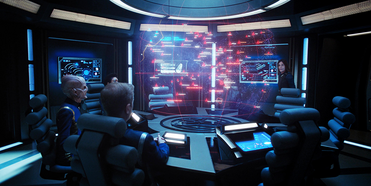
Although AORs have only one owner, members may write together within an AOR. This might include starships deploying directly alongside each other, or collaborative but separate missions that take advantage of the geographic size of the AOR and dramatic scope of the FA. For example, one member may invite another to write in their AOR during the FA, with one of them writing about their squadron’s military campaign against the Vaadwaur, while the other writes about their ships offering humanitarian relief to the civilians. A third writer might write about their ship trying to take down the Blackout Outpost in Underspace. A fourth might write about their small ship hunting Vaadwaur patrols separate from the main force, while a fifth might write about their California-class building orbital defences around a planet not yet attacked.
The Campaign Table can help figure out how to share out these tasks, as it provides, for example, multiple story prompts for individual ship assignments against a backdrop of liberating or defending a sector. Rather than using the table to randomly assign mission objectives, it can help break down the myriad of tasks which go into liberating or defending an AOR, and thus can provide a strong framework for members planning to collaborate.
Whether an AOR (aside from the TF AORs) is shared is a decision for the owner to make. Once someone has been allocated or has created an AOR, they have full control over the sharing or participation in that space. Other members should be included by invitation only. While, once other members are involved, it should be down to the participants to collaborate as they see fit, the AOR owner effectively has final say in decision-making.
It is absolutely critical to note that whether an AOR is shared is the decision of the AOR’s owner. If the owner wishes to share, the Intelligence Office encourages them to reach out directly to people they want to write with. If they want to be very open, they might use the #writing-partners channel on the BF Discord. The owner of the AOR has the right to refuse anyone else’s request to participate in their AOR for any reason, and does not need to even give a reason. They may include some members but not others entirely at their discretion. If you ask to share someone else’s AOR, it is perfectly acceptable for them to reply, ‘No,’ with no explanation or apology.
Do not badger people to let you share their AOR. I don’t care how cool it is.
Sharing a Task Force AOR
Members are welcome to set their FA missions within the AORs of a specific task force, such as TF21’s Deneb Sector Block. This is open to any member; you are not limited only to your own TF’s AOR.
TF staff are responsible for the OOC administration of their AORs. They are not required to set their own commands’ missions in the TF AOR, write Stories about TF staff or the TF HQ in the AOR during the FA, or make creative decisions about conditions in the TF AOR (they may do all of these if they wish!). They are, however, the decision-makers and points of contact to organise writers who do wish to set their stories in the AOR.
Conditions in any TF AOR should be considered ‘average’: the Vaadwaur are invading through Underspace apertures and their forces are appearing across the AOR, which is cut off from the rest of the galaxy by the Blackout. Local forces, including TF assets, are rallying to defend against the Vaadwaur assault. The Intelligence Office recommends that, by default, the TFHQ itself should not be directly threatened, but can act as a ‘fallback’ point and IC organisational hub for Starfleet defence of the region.
From there, members who wish to write in the TF AOR should approach the staff and make their interest known. That interest should be specific - a wish to set a mission in a specific region or system, which may be a canon location or a new, member canon location within the AOR. Unlike the general canon AORs, which are shared out on a ‘first come, first served’ basis, TF staff may use their judgement on how to share out the AOR. Members who write in a TF AOR should be encouraged and expect to collaborate with others in their writing, and should choose a different AOR if they are not prepared to share.
For example, the staff of TF21 might decide that Starbase 21, in the Izar system, is operating as a fallback point for local forces, and has not been directly attacked. Member A approaches the TF staff, saying they wish to write a story about their commands defending the Sevury system. Member B says they wish to write about liberating the Leonis system. So long as Members A and B only depict those specific locations, or additional, new, member canon regions of the Deneb Sector Block, the TF staff needs to do very little but confirm permission to these writers.
Member C, however, also wishes to write a story set in the Sevury system. At this point, TF staff should discuss options with Members A and C. While Member A shouldn’t be expected to throw all of their plans out the window, TF staff should help the two members collaborate on how to both tell a story in the system, or reach a compromise if this is not possible, perhaps directing Member C to a different location. See the first paragraph of the ‘Sharing an AOR’ section above with some examples of how a region can be shared.
As such, this sharing can get potentially very rich and collaborative, with writers in one TF AOR feeding off each other’s ideas and incorporating events from one nearby system into their story in another, or telling shared stories in one locale. Clear communication to TF staff by those who want to be involved will stop treading on toes, but there are a lot of ways to share space without being reliant on or beholden to other writers.
Participating in a story in a TF AOR is an excellent way to share an epic narrative with a lot of moving parts. It does, however, require collaboration, patience, and a willingness to change. The TF staff are not there to dictate proceedings, but they have ultimate say (apart from the Intelligence Office) in how to share out the region among members and the state of play in the AOR.
